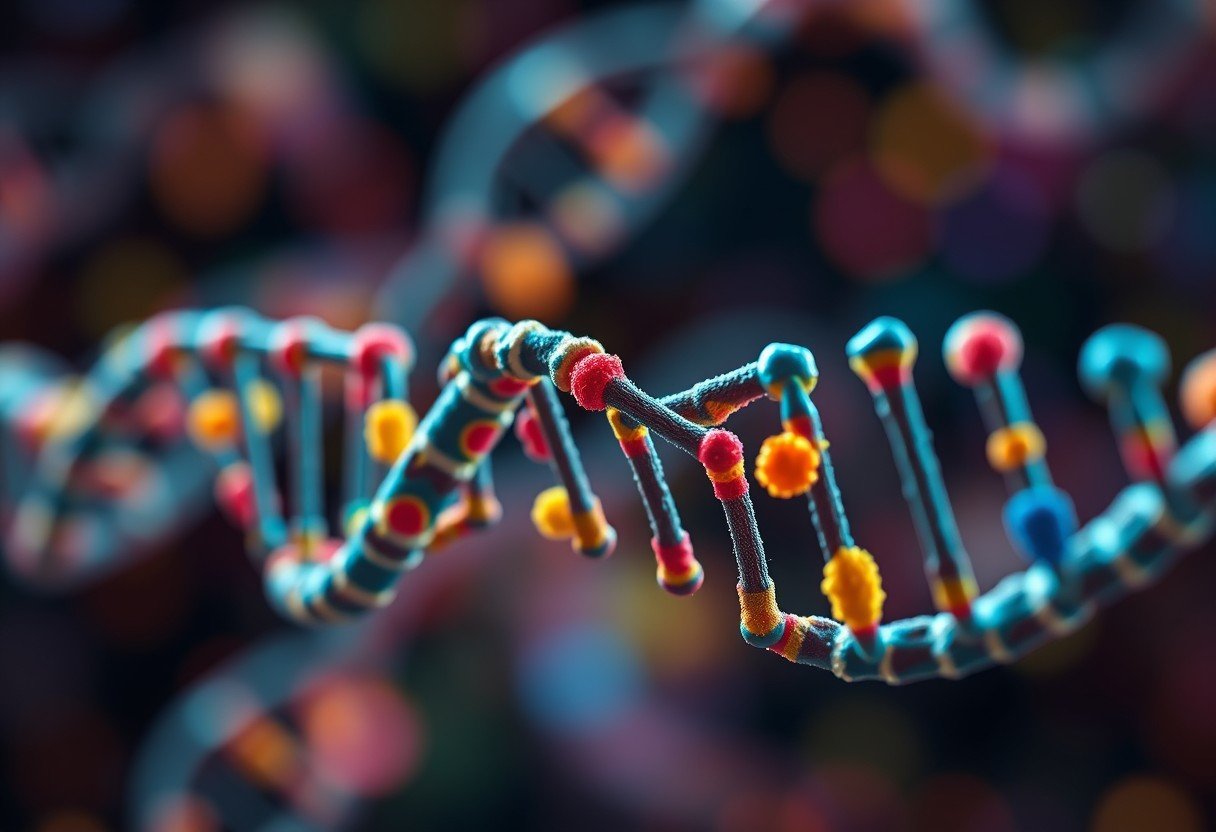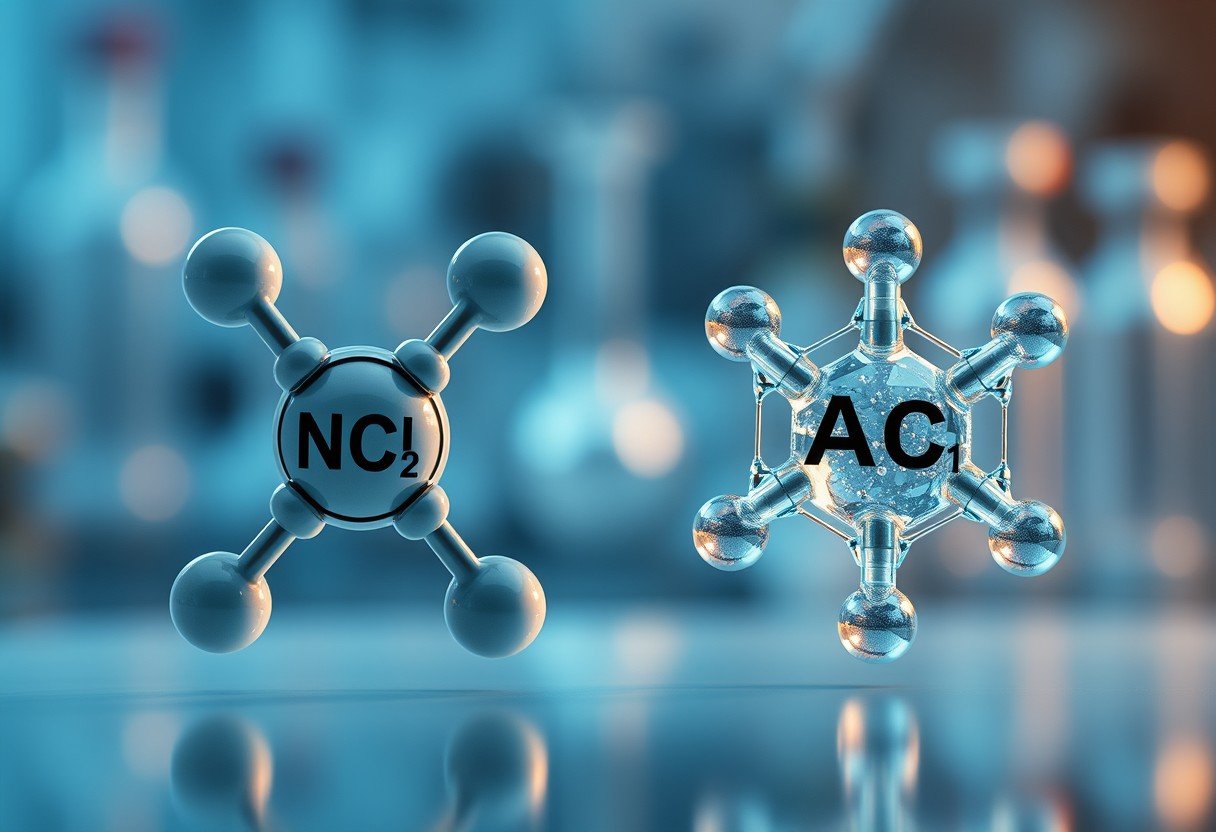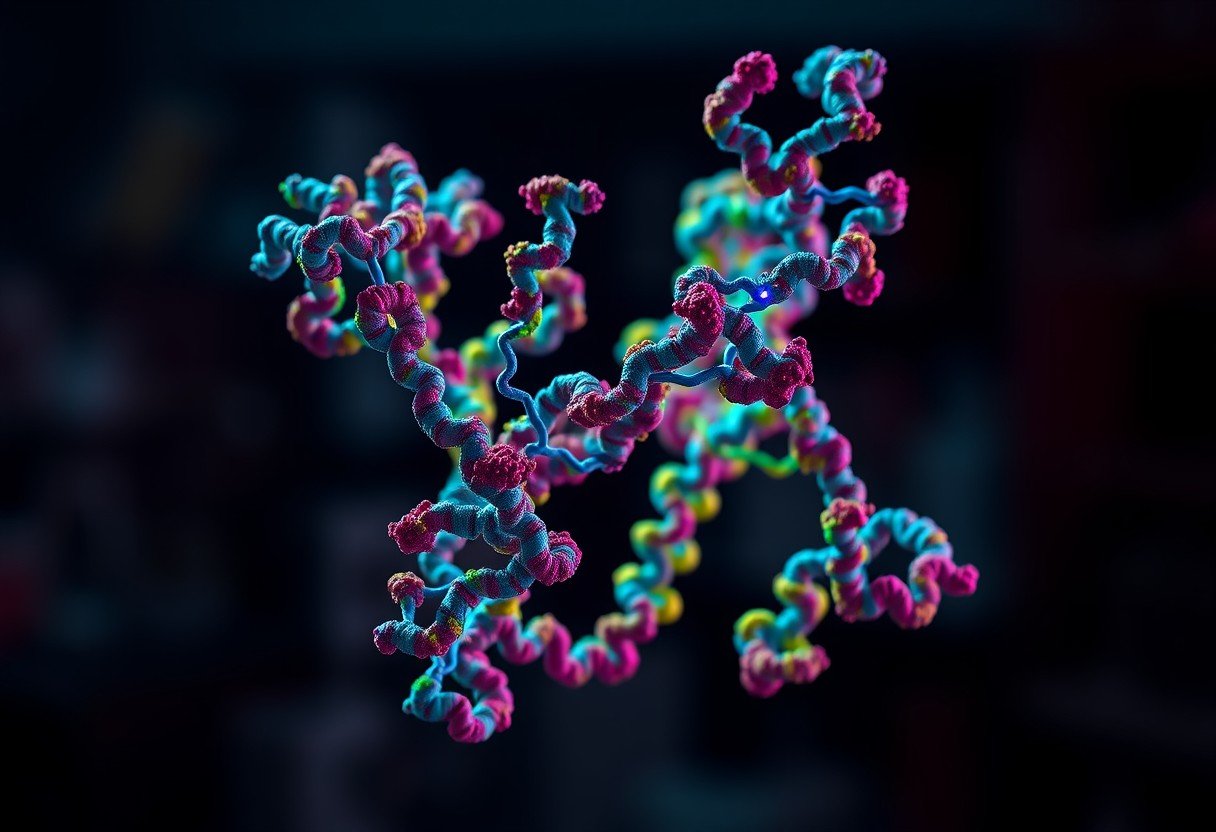You might be surprised to learn that a single typo in your body’s genetic instruction book can have huge consequences. This tiny error, called a point mutation, happens in your DNA and can dramatically change how a protein works. It can alter a protein’s shape, stability, or ability to do its job, which is crucial for understanding everything from how our bodies function to the root causes of many diseases.
What is a Point Mutation?
A point mutation is a change in a single building block, known as a nucleotide base, within a DNA sequence. Think of your DNA as a long sentence; a point mutation is like changing a single letter. These changes can happen spontaneously when your cells make mistakes copying DNA, or they can be caused by environmental factors like UV radiation or certain chemicals.
These mutations are not all the same and can have very different outcomes for the protein being made. Scientists classify them into several types to better understand their potential impact.
A small change in the DNA code can lead to significant biological effects. The outcome depends entirely on what kind of change it is and where it occurs in the gene.
| Type of Mutation | Description |
|---|---|
| Missense | Changes a single amino acid in the protein. |
| Nonsense | Creates a premature “stop” signal, cutting the protein short. |
| Silent | Does not change the amino acid sequence. |
How a Protein’s Shape Determines its Job
The activity of a protein is completely tied to its specific three-dimensional structure. Imagine a key that is precisely shaped to fit a particular lock. A protein is like that key, and its shape allows it to interact perfectly with other molecules to carry out its function.
Enzymes, which are a type of protein that speeds up chemical reactions, are a perfect example. They have a special region called an active site, which is shaped to bind to a specific molecule, or substrate. If the shape of this active site is altered, the enzyme can no longer bind to its substrate effectively, which can slow down or completely stop a vital biological process.
Any change to a protein’s structure can disrupt its ability to function correctly. This delicate relationship between structure and function is why even a minor genetic alteration can have major effects on health.
The Ripple Effect of a Single Amino Acid Swap
When a point mutation occurs in a gene, it can change the instructions for building a protein. This often results in one amino acid being substituted for another in the protein chain. The new amino acid might have different properties, such as a different size, charge, or ability to interact with water.
This single substitution can disrupt the complex forces that cause a protein to fold into its correct 3D shape. Proper folding is absolutely essential for a protein to become active. If a critical amino acid is replaced, the protein may misfold, become unstable, or even form clumps that can be toxic to cells.
This failure to fold correctly can lead to a complete loss of function or, in some cases, cause the protein to gain a new, harmful function.
When Protein Activity Changes: Loss vs. Gain of Function
Altered protein activity due to mutations can generally be categorized into two main outcomes: loss of function or gain of function. Each has different implications for an organism’s health.
A loss of function mutation is exactly what it sounds like. The resulting protein has reduced or no activity. This is often the cause of genetic disorders where a crucial process is disrupted because a necessary protein isn’t doing its job.
- Complete Inactivation: The protein may be nonfunctional, as seen in many cases of cystic fibrosis where a faulty protein cannot transport ions properly.
- Reduced Activity: The protein might still work, but not as efficiently, leading to milder symptoms or issues that only appear under certain conditions.
On the other hand, a gain of function mutation results in a protein with a new or enhanced activity. This can be just as dangerous, as it can lead to uncontrolled cellular processes like growth, which is a hallmark of cancer. These proteins might be “always on” or start interacting with molecules they normally wouldn’t.
Real-World Consequences of Point Mutations
The impact of point mutations isn’t just theoretical; it has profound real-world implications for human health and biotechnology. Many well-known genetic diseases are caused by a single point mutation that alters the function of a critical protein.
For example, sickle cell anemia is caused by a single missense mutation in the gene for hemoglobin. This one change causes the protein to form incorrectly, leading to red blood cells that are misshapen and can block blood flow. Understanding the specific mutation allows for better diagnosis and the development of targeted therapies.
In biotechnology, scientists harness the power of point mutations. Using tools like CRISPR-Cas9, researchers can intentionally create or correct point mutations. This technology is being used to develop crops that are more resistant to disease and to research potential cures for genetic disorders by fixing the underlying mutation.
Frequently Asked Questions
How can a point mutation affect a protein?
A point mutation can change the amino acid sequence of a protein. This can alter the protein’s 3D shape, stability, or active site, which may make it less active, more active, or completely nonfunctional.
Are all point mutations harmful?
No, not all point mutations are harmful. Some are neutral and have no effect (silent mutations), while others can be beneficial, providing a new function that gives an organism a survival advantage.
What is the difference between a missense and a nonsense mutation?
A missense mutation swaps one amino acid for another. A nonsense mutation changes an amino acid codon into a stop codon, causing the protein to be cut short, which usually results in a nonfunctional protein.
How do scientists study the effects of point mutations?
Researchers use techniques like site-directed mutagenesis to create specific mutations in a lab. They then study the resulting protein’s activity, structure, and stability to understand the mutation’s precise impact.
Can a single point mutation cause a disease?
Yes, absolutely. Diseases like sickle cell anemia and cystic fibrosis are classic examples of serious conditions caused by a single point mutation in a single gene.









Leave a Comment